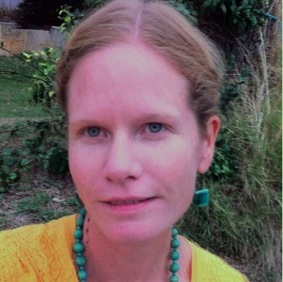“I would never bend over to pick something up. I try to brace myself on any move. Because every time time it hurts I think that I’m doing more damage. Every time it hurts I think it is getting worse and I am breaking down, I am killing myself…” (John, a 42 year old school teacher who has experienced back pain for 2 years).
“I don’t think that picking up that pen is going to damage my spine. But I know if I bend over and pick up that pen, that pen is going to irritate me for the next half an hour. Why would I do that when I could have half an hour pain-free? I can achieve a lot in half an hour if I am not in agony” (Emma, a 48 year old caterer who has experienced back pain for 1 year).
The Tampa Scale of Kinesiophobia (TSK) is a widely used tool to assess “fear of movement and physical activity that is (wrongfully) assumed to cause (re)injury” in people with low back pain (Vlaeyen et al. 1995). It is thought to comprise of two subscales (Clark et al. 1997). The Somatic Focus subscale describes the belief that pain is a sign of bodily harm. It includes items such as “My body is telling me I have something dangerously wrong”. The Activity Avoidance subscale describes the belief that activity may result in (re)injury or increased pain. It includes items such as “I am afraid that I might injure myself if I exercise”
High scores on the TSK (≥37/68) are used to identify candidates for fear reduction interventions, which target the belief that pain is a sign of damage. However these interventions have had modest results: some people respond well, others respond less well, and high drop out rates have been reported (Linton et al. 2008)
To better understand the construct of pain-related fear in people with chronic non-specific low back pain, and who score high on the TSK (>40/68), we conducted qualitative interviews with 36 individuals who met these criteria. Early in the interview process it became apparent that not all high scoring individuals were “fearful of movement and physical activity that they (wrongfully) assumed to cause (re)injury”. This raised the question ‘What construct does the TSK actually measure?’. We explored this in our recent publication in the Clinical Journal of Pain (Bunzli et al. 2014).
Two main beliefs that underly high scores on the TSK were identified. John (above) illustrates ‘damage beliefs’ – he believes painful activity could cause damage to his spine. Emma illustrates ‘suffering/functional loss beliefs’ – she believes painful activity will impact on suffering and/or subsequent function. A few people had mixed beliefs.
Through a process of ‘quantitization’ we then placed individuals into a ‘damage beliefs’ group or ‘suffering/functional loss beliefs’ group according to their predominant underlying belief, and then analysed associations between groups and itemized scores on the TSK.
We found that individuals in the ‘damage beliefs’ group agreed more significantly with items on the TSK- Somatic Focus subscale than individuals in the ‘suffering/functional loss beliefs’ group. This lends ‘construct validity’ to the TSK- Somatic Focus subscale. The TSK- Activity Avoidance subscale did not discriminate between groups, possibly due to the inclusion of the word ‘injure’ that was ambiguously interpreted by the two groups.
While the TSK may be a useful clinical tool to identify individuals who fear the consequences of painful activity, it does not seem to discriminate between these 2 beliefs. We think identifying people with these beliefs may be important for targeted interventions. We suggest that clinicians consider including simple questions in their clinical assessment of patients presenting with low back pain and high scores on the TSK such as:
Do you worry that performing a painful activity will cause damage to your spine?
Do you worry that performing a painful activity will impact on all the other things you need to get done in your day?
About Sam Bunzli
 Sam worked for 10 years in musculoskeletal physiotherapy and is now a PhD Candidate at Curtin University conducting her research under the supervision of Professor Peter O’Sullivan and Dr Anne Smith. She likes talking to patients, likes transcribing less, no longer prefers tea to coffee, but is passionate about clinically orientated qualitative research.
Sam worked for 10 years in musculoskeletal physiotherapy and is now a PhD Candidate at Curtin University conducting her research under the supervision of Professor Peter O’Sullivan and Dr Anne Smith. She likes talking to patients, likes transcribing less, no longer prefers tea to coffee, but is passionate about clinically orientated qualitative research.
References
Vlaeyen J, Kole-Snijders A, Boeren R, van Eek H. Fear of movement/(re)injury in chronic low back pain and its relation to behavioral performance. Pain 1995; 62:363-372.
Clark M, Kori S, Brockel J: Kinesiophobia and chronic pain: Psychometric characteristics and factor analysis of the Tampa Scale. 15th APS Annual Scientific Meeting, American Pain Society, 1996.
Linton S, Boersma K, Jansson M, Overmeer T, Lindblom K, Vlaeyen J. A randomized controlled trial of exposure in vivo for patients with spinal pain reporting fear of work-related activities. European Journal of Pain 2008; 12:722-730.
Bunzli S, Watkins R, Smith A, Schutze R, O’Sullivan P. What do people who score highly on the Tampa Scale of Kinesiophobia really believe?. The Clinical Journal of Pain 2014. DOI: 10.1097/AJP.0000000000000143
Bunzli S, Smith A, Watkins R, Schütze R, & O’Sullivan P (2014). “What Do People who Score Highly on the Tampa Scale of Kinesiophobia Really Believe? A Mixed Methods Investigation in People with Chronic Non Specific Low Back Pain. The Clinical journal of pain PMID: 25167327



